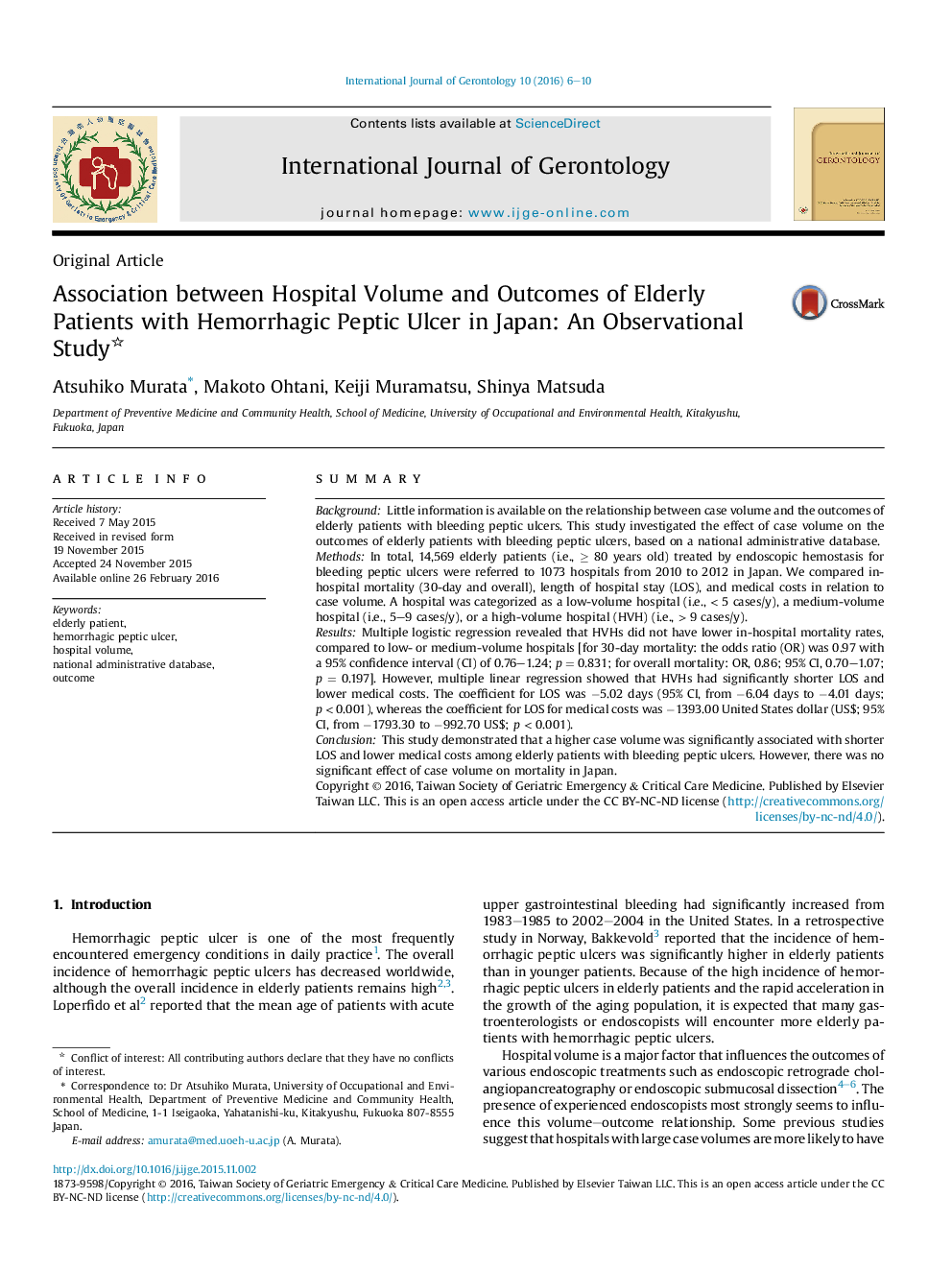| Article ID | Journal | Published Year | Pages | File Type |
|---|---|---|---|---|
| 3325129 | International Journal of Gerontology | 2016 | 5 Pages |
SummaryBackgroundLittle information is available on the relationship between case volume and the outcomes of elderly patients with bleeding peptic ulcers. This study investigated the effect of case volume on the outcomes of elderly patients with bleeding peptic ulcers, based on a national administrative database.MethodsIn total, 14,569 elderly patients (i.e., ≥ 80 years old) treated by endoscopic hemostasis for bleeding peptic ulcers were referred to 1073 hospitals from 2010 to 2012 in Japan. We compared in-hospital mortality (30-day and overall), length of hospital stay (LOS), and medical costs in relation to case volume. A hospital was categorized as a low-volume hospital (i.e., < 5 cases/y), a medium-volume hospital (i.e., 5–9 cases/y), or a high-volume hospital (HVH) (i.e., > 9 cases/y).ResultsMultiple logistic regression revealed that HVHs did not have lower in-hospital mortality rates, compared to low- or medium-volume hospitals [for 30-day mortality: the odds ratio (OR) was 0.97 with a 95% confidence interval (CI) of 0.76–1.24; p = 0.831; for overall mortality: OR, 0.86; 95% CI, 0.70–1.07; p = 0.197]. However, multiple linear regression showed that HVHs had significantly shorter LOS and lower medical costs. The coefficient for LOS was −5.02 days (95% CI, from −6.04 days to −4.01 days; p < 0.001), whereas the coefficient for LOS for medical costs was −1393.00 United States dollar (US$; 95% CI, from −1793.30 to −992.70 US$; p < 0.001).ConclusionThis study demonstrated that a higher case volume was significantly associated with shorter LOS and lower medical costs among elderly patients with bleeding peptic ulcers. However, there was no significant effect of case volume on mortality in Japan.
